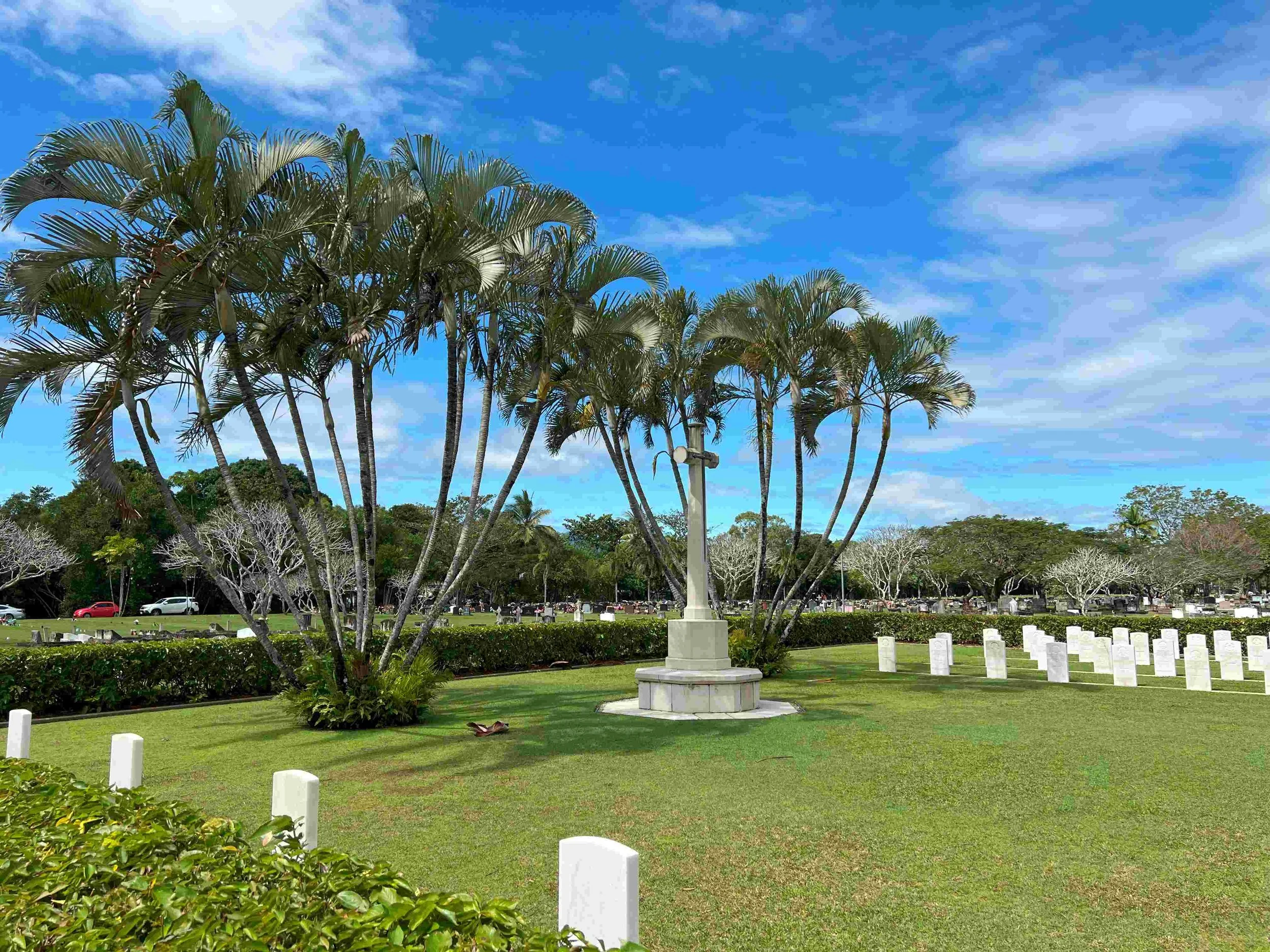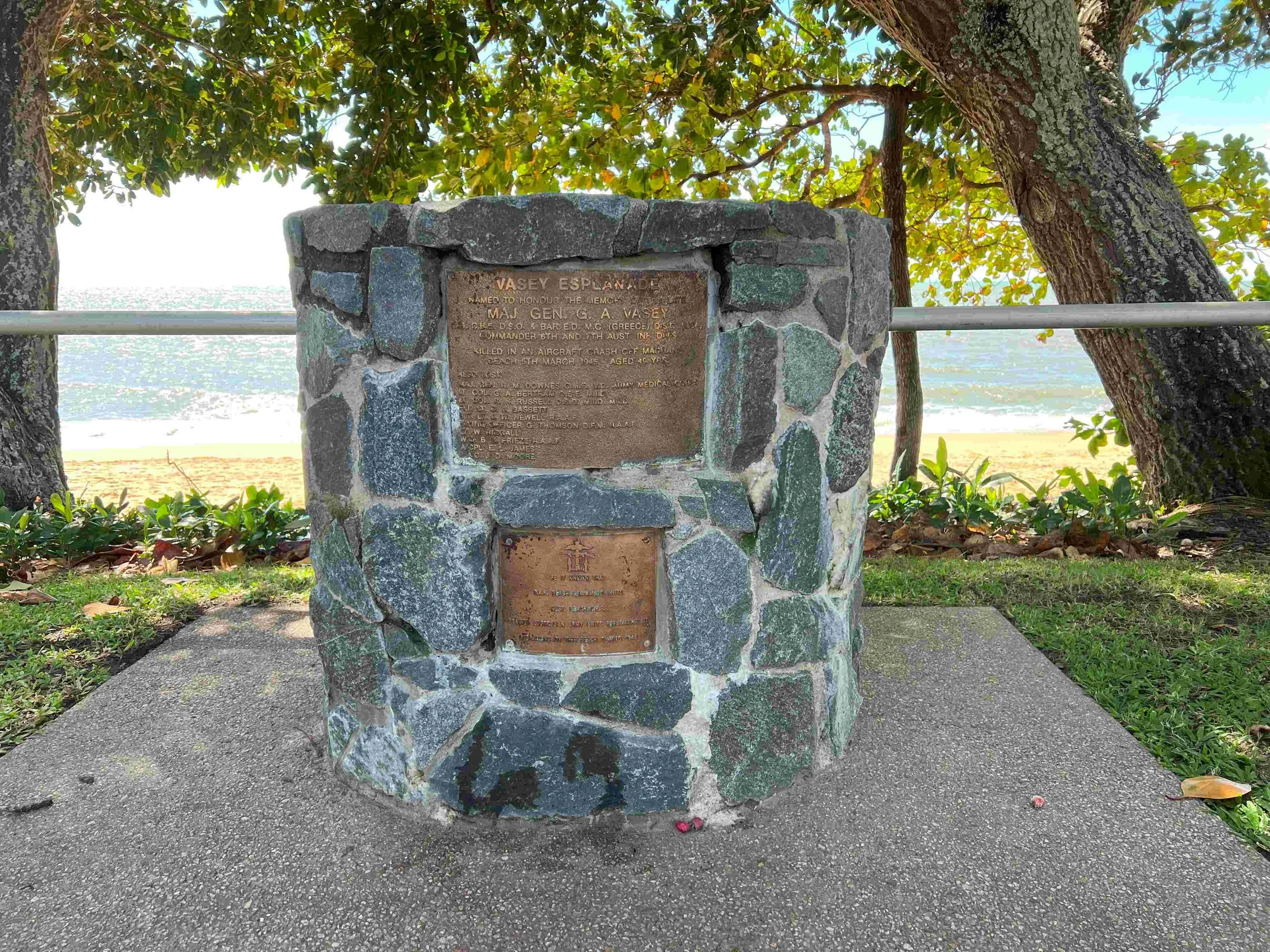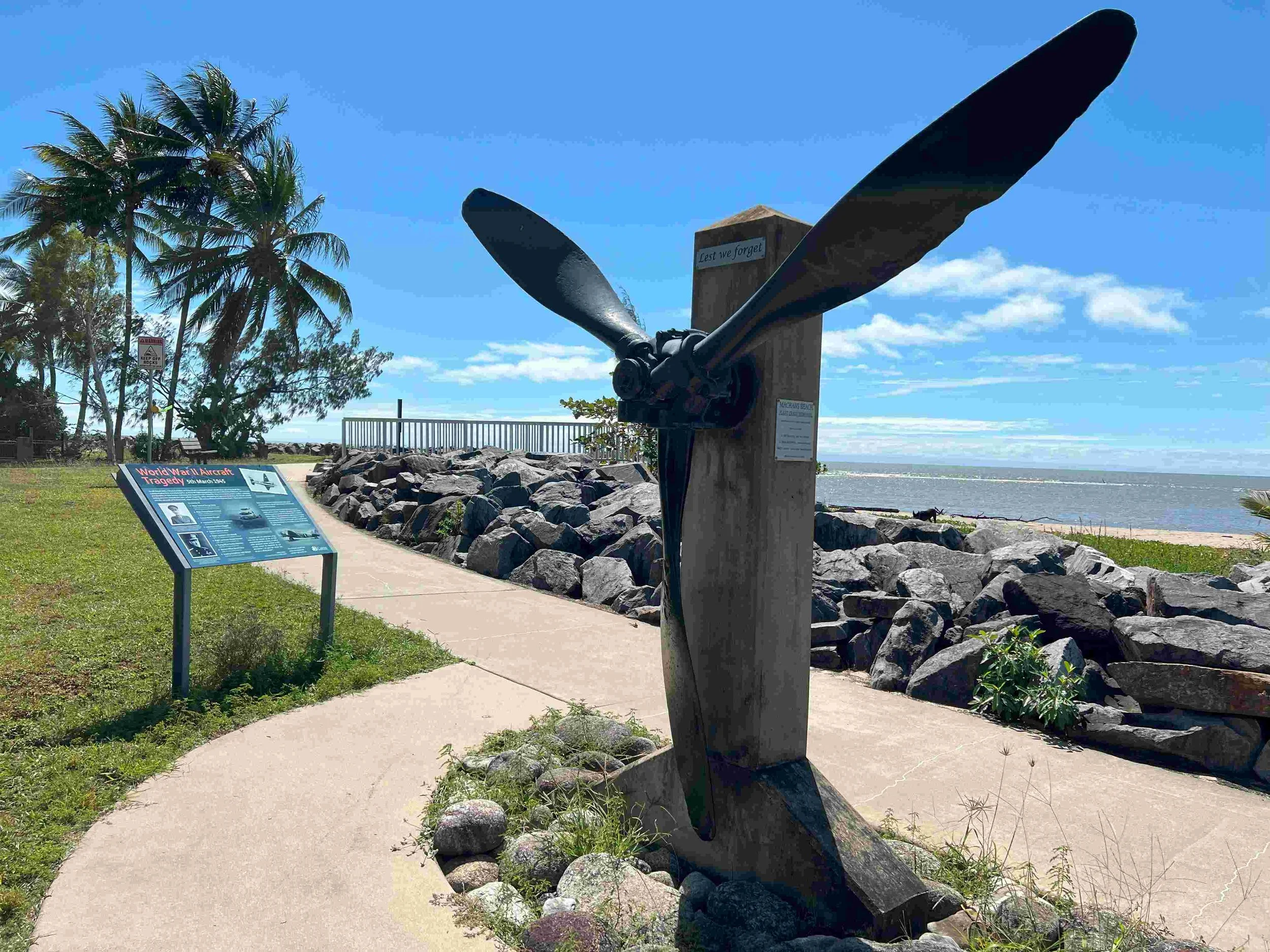The Generals of Cairns War Cemetery
Cairns War Cemetery
An RAAF Lockheed Hudson similar to the one involved in the crash
Cemeteries can be interesting places. The headstones provide a source of information from the family tree to sometimes, how that person died, or some comment regarding their lifetime. War cemeteries, although more regimented, can also rouse curiosity.
The Cairns War Cemetery, part of a larger cemetery in Manunda, was created during WWII and is the final resting place for 119 service personnel. To the casual observer, it is a small cemetery like most other cemeteries. But on closer look, you will note the names of two major generals and other high ranking military staff, all with the same date of death - the 5th March 1945.
What happened?
An RAAF Lockheed Hudson (A16-118) departed Archerfield Airport in Brisbane with 11 personnel on board, including Major Generals George Vasey and Rupert Downes. The flight was headed to New Guinea where Major General Vasey was about to take command of the Australian 6th Division. The flight landed at Townsville where the pilot was warned of bad weather in the Cairns area due to a cyclone off the coast. We will never know what happened but later that day, when the aircraft was attempting to land at Cairns, it crashed into the sea about 400 metres off the coast from Machans Beach. All on board were tragically killed. They were:
Major General GA Vasey, CB, CBE, DSO, Staff Corps
Major General RM Downes, CMG, VD, Medical Historian,
Colonel RH Russell, AAMC,
Lieutenant W Riggall, Aide to General Vasey,
Corporal EL James,
Flight Lieutenant JW Newell,
Flying Officers DJ Bassett, G Thomson, S B Freize
Leading Aircraftsmen JD Moore.
Those recovered were buried at the Cairns War Cemetery with full military honours. On the 8th March, Vasey, Downes and Bertram were buried with Generals Sir Thomas Blamey and Sir Leslie Morshead being the chief mourners. An article published in the Cairns Post dated 9th March, tells more:
A coffin is lowered into the ground
“For an hour or more before the burial service, personnel and civilians were converging on the cemetery. The paths to the graves were lined with troops forming a military funeral guard of honour. Just before the cortege arrived the troops reversed their arms, with the-muzzles of their rifles on their toes, hands across the rifle butts and heads bowed. Motionless they stayed like that until the funeral service was over.
Opposite the graves stood 100 officers of the Australian Army and Air Force, many wearing decorations and service ribbons of two wars. As the coffins, each carried by eight bearers - husky young Australian soldiers dressed in jungle greens and with bared heads and accompanied by eight pallbearers for each coffin, the military band with drums draped in black played a slow, soft funeral march. So slowly did the funeral procession march that it hardly seemed to move between the lines of the funeral guard of honour.
After the coffins were placed on the wooden supports across the grave tops. General Sir Thomas Blamey, Commander-in-Chief, A.M.F., and Lieut General Sir Leslie Morshead stepped in front of the rows of officers opposite the graves.”
(In his eulogy) “General Blamey described how Major General Vasey went to Greece when the Jugoslav Government left that small British force - mainly Australians and New Zealanders - with their flank open. General McKay had to hurry up with a force to hold up the Germans. General Vasey, in a heroic manner in the mud and slush and snow, brought his men back. General Vasey was called upon to take over the Australian troops crossing the Kokoda Trail of the Owen Stanley Range in New Guinea. He went forward, with a readiness that was always his. General Vasey was one of our grand soldiers …”
"Major General Downes." continued General Blamey, "was one of those who worked hard for Australia during the time when many forgot that a war could occur. He worked hard to establish and maintain a high standard of efficiency in the Australian medical forces. He gathered round him a group of men who, by their research and by their attention to the troops, have won the complete confidence of the Army."
The search for the victims of the crash continued for several days later. However, the bodies of Russell, Riggall, Bassett and Moore were never found. Their names are commemorated at the Sydney War Cemetery Memorial.
As a mark of respect, the Mulgrave Shire Council (Cairns) named the esplanade at Trinity Beach “Vasey Esplanade” in his honour and erected a plaque to commemorate all eleven personnel lost in the crash. In May 2018, a memorial to the crash and its victims, was erected at Machans Beach.
Memorial on Vasey Esplanade, Trinity Beach, Cairns
Memorial at Machans Beach, Cairns
Source:
5 March 1945 – Crash of Hudson in the sea at Machan’s Beach just north of the Baron River, Qld, killing Major General George Alan Vasey, accessed 8th February 2024, https://www.ozatwar.com/5mar45.htm
George Alan Vasey, accessed 8th February 2024, https://en.wikipedia.org/wiki/George_Alan_Vasey
Home Newspapers & Gazettes Browse The Cairns Post (Qld.: 1909 - 1954) Fri 9 Mar 1945 Page 3 VICTIMS OF PLANE CRASH BURIED AT CAIRNS CEMETERY, accessed 23rd march 2025, https://trove.nla.gov.au/newspaper/article/42464812








